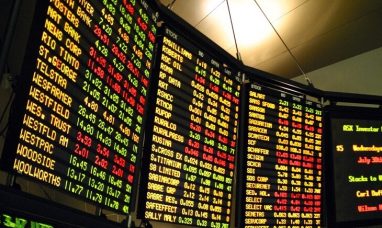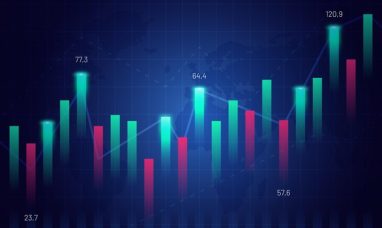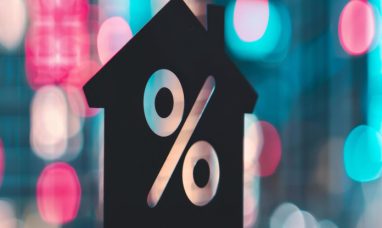The trend of falling used car prices continued into July, providing some relief to consumers in the wake of pandemic-driven inflation that had sent vehicle prices skyrocketing. According to data from the Bureau of Labor Statistics, used car prices dropped by 2.3% in July compared to the previous month and are down 10.9% from the same time last year. These declines mark a significant reversal from the steep price increases seen during the peak of the pandemic.
A Return to Normalcy in the Auto Market
The current state of falling used car prices signals a return to a more stable and predictable auto market, a shift that many buyers have been eagerly awaiting. Since their peak in February 2022, when prices for used vehicles were inflated by over 40% annually, the market has seen a sharp correction. As of July 2023, prices are now 19.4% lower than those pandemic highs, although they remain 16.9% above pre-pandemic levels in July 2019.
The broader economic context also reflects this cooling trend. Headline inflation, as measured by the Consumer Price Index, rose by 0.2% in July and by 2.9% year-over-year, slightly below June’s 3% increase. This deceleration in inflation is partly driven by the normalization of auto prices, which were a significant contributor to overall inflation during the pandemic.
Inventory Buildup and Price Dynamics
The primary driver behind falling used car prices is the buildup of inventory, particularly in the new car market. According to auto research firm Edmunds, the increasing availability of new vehicles has led to discounts and incentives aimed at moving aging inventory off dealer lots. This trend has had a cascading effect on the used car market, where the values of newer used vehicles have correspondingly declined.
This dynamic is a stark contrast to the situation during the pandemic, when supply chain disruptions and semiconductor shortages severely limited new car production, pushing consumers toward the used car market and driving prices to unprecedented levels. Now, as production normalizes and inventories recover, both new and used car prices are seeing downward pressure.
Impact on the Auto Industry
While the decline in prices is welcome news for consumers, it presents a mixed picture for dealers and automakers. Companies like Ford (NYSE:FORD), General Motors (NYSE:GM), and Toyota (NYSE:TM) have reported strong sales at the dealer level despite the ongoing price reductions. General Motors, for example, is only anticipating modest drops in average transaction prices, suggesting that the impact on their bottom line may be less severe than feared.
For used car dealers, there is a silver lining amid the broader trend of falling used car prices. The Manheim Used Vehicle Value Index, which tracks wholesale prices paid by dealers, showed a slight increase in July compared to June. This rise indicates that demand for used cars at the wholesale level remains robust, and it may signal some stabilization in retail prices as well.
However, the outlook remains uncertain. Manheim analysts have pointed out that the reduced flow of leased vehicles returning to the used market could exert upward pressure on prices in the near term. The critical question is whether this uptick will be a temporary blip or the beginning of a sustained trend.
What’s Next for the Auto Market?
As falling used car prices continue to define the current market landscape, consumers and industry players alike are watching closely for signs of what’s to come. For buyers, the current environment presents an opportunity to purchase vehicles at more reasonable prices compared to the highs of the past few years. For dealers and automakers, the challenge lies in balancing inventory levels and maintaining profitability amid shifting market dynamics.
In conclusion, the ongoing trend of falling used car prices reflects a broader return to normalcy in the auto market. While the road ahead remains uncertain, the current landscape offers a more favorable environment for consumers and signals a stabilization in an industry that has seen significant upheaval over the past few years.
The trend of falling used car prices continued into July, providing some relief to consumers in the wake of pandemic-driven inflation that had sent vehicle prices skyrocketing. According to data from the Bureau of Labor Statistics, used car prices dropped by 2.3% in July compared to the previous month and are down 10.9% from the same time last year. These declines mark a significant reversal from the steep price increases seen during the peak of the pandemic.
A Return to Normalcy in the Auto Market
The current state of falling used car prices signals a return to a more stable and predictable auto market, a shift that many buyers have been eagerly awaiting. Since their peak in February 2022, when prices for used vehicles were inflated by over 40% annually, the market has seen a sharp correction. As of July 2023, prices are now 19.4% lower than those pandemic highs, although they remain 16.9% above pre-pandemic levels in July 2019.
The broader economic context also reflects this cooling trend. Headline inflation, as measured by the Consumer Price Index, rose by 0.2% in July and by 2.9% year-over-year, slightly below June’s 3% increase. This deceleration in inflation is partly driven by the normalization of auto prices, which were a significant contributor to overall inflation during the pandemic.
Inventory Buildup and Price Dynamics
The primary driver behind falling used car prices is the buildup of inventory, particularly in the new car market. According to auto research firm Edmunds, the increasing availability of new vehicles has led to discounts and incentives aimed at moving aging inventory off dealer lots. This trend has had a cascading effect on the used car market, where the values of newer used vehicles have correspondingly declined.
This dynamic is a stark contrast to the situation during the pandemic, when supply chain disruptions and semiconductor shortages severely limited new car production, pushing consumers toward the used car market and driving prices to unprecedented levels. Now, as production normalizes and inventories recover, both new and used car prices are seeing downward pressure.
Impact on the Auto Industry
While the decline in prices is welcome news for consumers, it presents a mixed picture for dealers and automakers. Companies like Ford (NYSE:FORD), General Motors (NYSE:GM), and Toyota (NYSE:TM) have reported strong sales at the dealer level despite the ongoing price reductions. General Motors, for example, is only anticipating modest drops in average transaction prices, suggesting that the impact on their bottom line may be less severe than feared.
For used car dealers, there is a silver lining amid the broader trend of falling used car prices. The Manheim Used Vehicle Value Index, which tracks wholesale prices paid by dealers, showed a slight increase in July compared to June. This rise indicates that demand for used cars at the wholesale level remains robust, and it may signal some stabilization in retail prices as well.
However, the outlook remains uncertain. Manheim analysts have pointed out that the reduced flow of leased vehicles returning to the used market could exert upward pressure on prices in the near term. The critical question is whether this uptick will be a temporary blip or the beginning of a sustained trend.
What’s Next for the Auto Market?
As falling used car prices continue to define the current market landscape, consumers and industry players alike are watching closely for signs of what’s to come. For buyers, the current environment presents an opportunity to purchase vehicles at more reasonable prices compared to the highs of the past few years. For dealers and automakers, the challenge lies in balancing inventory levels and maintaining profitability amid shifting market dynamics.
In conclusion, the ongoing trend of falling used car prices reflects a broader return to normalcy in the auto market. While the road ahead remains uncertain, the current landscape offers a more favorable environment for consumers and signals a stabilization in an industry that has seen significant upheaval over the past few years.
Featured Image: Freepik







